- Rejuvenate: we want to create thriving churches where families can find a place of belonging and purpose. This may involve reducing the age profile of congregations, and an emphasis on our work with children and young people. This aspiration is a watermark that runs through the following parts of our strategy:
- Revive: we want to revive the spiritual leadership in our diocese, so lay and clergy leaders are vibrant disciples, whose faith is deep and attractive to others. This may involve some inspirational ministers coming alongside, coaching and equipping our leaders. It also could involve lay and clergy leaders forming clusters who can eat, laugh, learn, lament, pray and offer support together, to deepen their faith and develop more effective ministry;
- Revitalise: we want to develop a culture where churches create pathways by which people might become disciples in their local congregations. It may involve encouraging church members to engage with the world, evangelise in words and deeds, establish disciples centred in Jesus, and equip those new disciples for mission. It may also involve specific initiatives, including:
- Choir Church: using worship to intentionally create new disciples;
- School Chaplains: to care for the mental and spiritual wellbeing of children and young people;
- investment in areas of potential;
- investment in areas of disadvantage.
- Renew: in places where there is little effective gospel presence, we will seek to plant new congregations that are resourced to thrive. So we might plant brand new worshipping communities using investment from the national Church, and pilot new worshipping communities in schools, in partnership with the Church of England’s Flourish initiative, among other things.
-
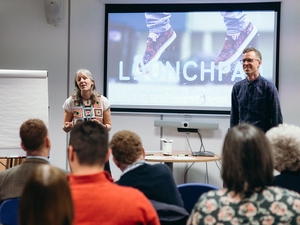
19 November 2025
Our clergy learn more about youth work
Clergy from across our diocese learnt more about how to begin and develop youth work ... read more
-
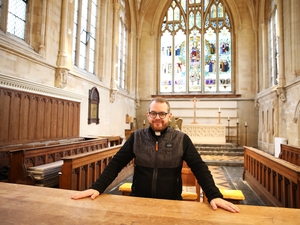
30 October 2025
New Harbour congregations are created
Two new congregations are being created as part of Harbour Church. The all-age service at ... read more
-
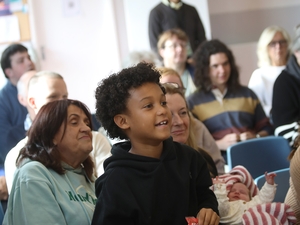
6 October 2025
Family-friendly Barn Church is launched
Dozens of worshippers have started to come to ‘Barn Church’ – a new style of ... read more
Bishop unveils our vision and strategy
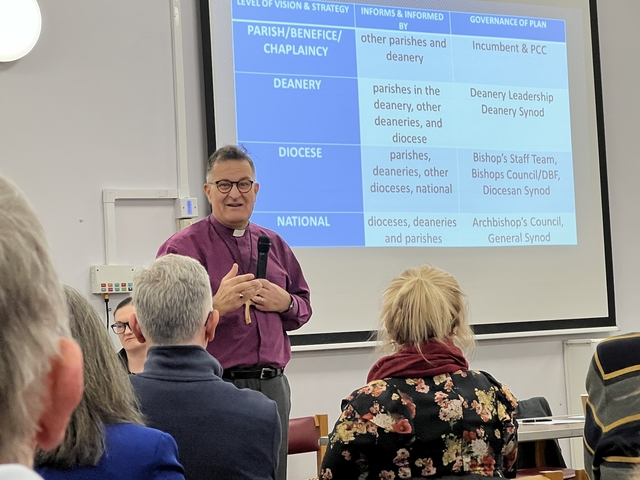
BISHOP Jonathan has unveiled a new vision and strategy to take us forward – and invited us to take part in it.
The bishop gave members of our Diocesan Synod a chance to look at the evolving vision and strategy that will guide our work, and invited feedback from members ahead of its final approval this June.
And the Archdeacon of the Isle of Wight, the Ven Steve Daughtery, and our strategy programme manager, Vanda Leary, fleshed out what that might look like in our parishes, church schools and chaplaincies – and the timetable for the rest of 2024.
The bishop talked initially about how it was possible for any diocese to have a strategy. He talked about the different levels in the Church of England and its dispersed model of leadership, which means that leaders create vision and strategy at all sorts of levels – parish, deanery, diocese and national Church.
He said those visions should inform and be informed by each other, and governance of them rests at different levels too. A diagram similar to this one helped Synod members to understand more:
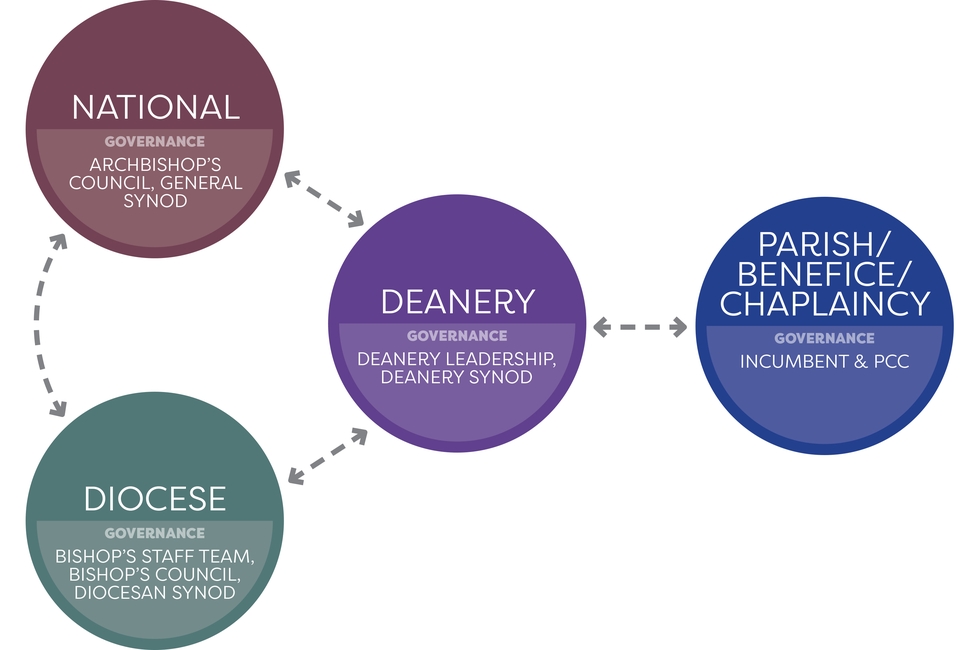
Bishop Jonathan said: “A good diocesan strategy will take seriously the planning at deanery level, which in turn will take seriously what parishes are doing. Each of these will also take account of the strategy being pursued at national level.”
He also explained that the tone of this process was invitational. Parishes and deaneries would be invited to take part in this process, all of which would be led by the Holy Spirit.
The Archdeacon of the Isle of Wight, the Ven Steve Daughtery, then described our evolving Vision and Strategic Framework, which aims to present the heartbeat of our diocesan life. He said that our vision was to be a rejuvenating community of Jesus-centred, Kingdom-seeking disciples.
He outlined some of the challenges we face: declining attendances, older congregations, expensive buildings, over-stretched staff, and a gap between the costs of our ministry and our income. So our strategic framework would aim to place children and young people at the heart of our planning, and also seek to revive, revitalise and renew our existing leadership and churches. That would involve:
Synod members heard from the Rev Fran Carabott, who had established a church plant at St Margaret’s Church in Southsea with few resources available at the outset. This initially small community had succeeded in transforming their building into a thriving hub for the local community and a place where disciples are created and nurtured. You can read more about what has happened here and you can read Fran’s story here.
Synod members were able to discuss these ideas in smaller groups and provide feedback, which was noted and will inform future discussions.
Vanda Leary, our diocese’s strategic projects manager, then explained the next steps to turn this initial thinking into a diocesan vision and strategy to be agreed at our June meeting of the Diocesan Synod, and to create a bid to be considered by the Church of England’s Strategic Mission and Ministry Investment (SMMI) Board. She said they would be revising the list of projects that might be supported over the coming months, to create a shortlist based on feasibility, cost and impact.